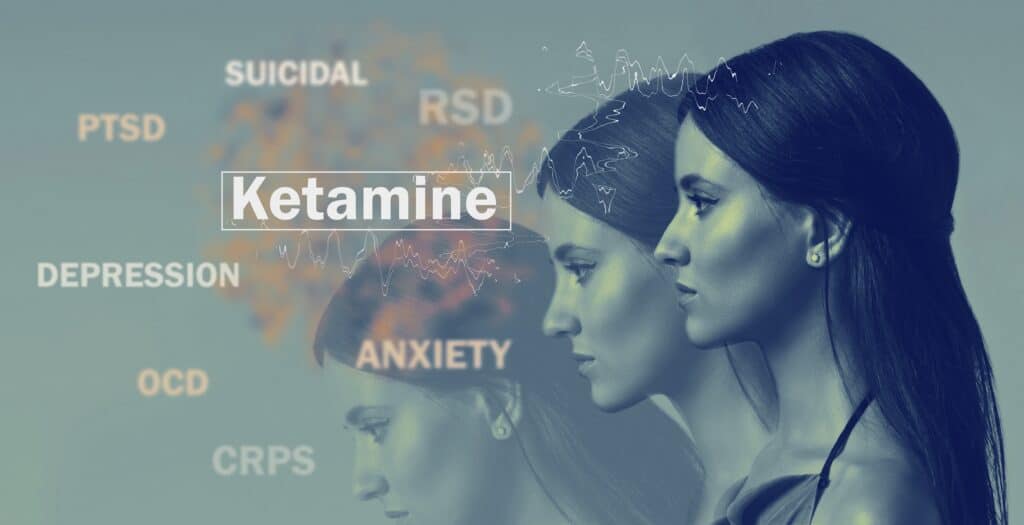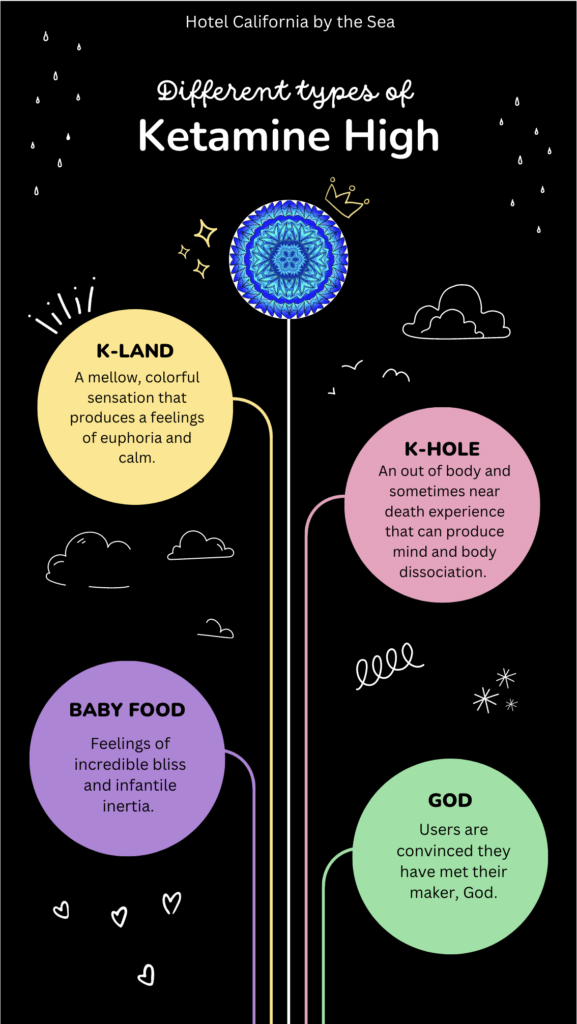Ketamine Overdose
Ketamine is a drug that stimulates the sympathetic nervous system and is becoming increasingly popular among young people. According to the Department of Justice’s National Drug Intelligence Center, in 2000, people ages 12-25 accounted for an estimated 74% of ketamine ER visits in the U.S. Data from a 2013 study by the National Survey on Drug Use and Health, reported an estimated 2.3 million people ages 12 and older used ketamine. Since then, usage has only continued to grow. Ketamine is a dissociative anesthetic that can make users feel a sense of detachment from reality and themselves. It produces hallucinogenic effects that distort the perception of sight and sound.
Ketamine is a Schedule III non-narcotic substance under the Controlled Substances Act. This means the substance has limited acceptable medical uses for purposes such as short-term sedation. However, this means it is also habit-forming and can lead to physical and psychological dependence. It was originally used as an anesthetic during veterinary procedures, medical surgical procedures as well as on the battlefield during the Vietnam War.

Ketamine affects multiple receptors throughout the brain and body. This includes the N-methyl-D-aspartate (NMDA) glutamate receptor, serotonin, dopamine and opioid receptors. Glutamate is one of the body’s most abundant neurotransmitters. It helps to control and regulate many functions of the nervous system and body. Glutamate creates a pathway in which the neurons use to communicate with one another. When these pathways are disrupted it can affect the body in multiple ways.
At high doses of ketamine, the production of glutamate is blocked and produces an anesthetic and immobilizing effect on the body often referred to as a “k-hole.” At lower doses, glutamate production is increased and can produce euphoric hallucinogenic-like effects often referred to as “k-land.”
Common names for ketamine include Vitamin K, Super K, Special K and Jet K. The drug is known to induce a state of sedation making users feel detached from their environment and relief from any feelings of pain. Like many other mind-altering drugs, ketamine misuse can lead to tolerance, dependence, addiction and overdose.
Can you Overdose on Ketamine?
Recreational use of ketamine can put users at high risk for overdose. The unpredictability of the drug’s effects is an important factor when assessing for overdose risk. Users who have medical preconditions such as any cardiovascular conditions, are more likely to experience dangerous overdose symptoms. The risk of ketamine overdose also increases when the drug is used in conjunction with other substances such as alcohol, opioids and amphetamines.
Polydrug use combinations such as ketamine and opioids or benzos can increase the risk of respiratory depression. Ketamine and cocaine or meth can lead to impaired coordination and a high risk for cardiovascular complications. These combinations of drug use contribute to a higher risk of ketamine overdose.
Ketamine overdose symptoms include:
- Respiratory depression
- Apnea
- Hypotension
- Seizure
- Bradycardia (slowed heart rate)
- Cardiac arrest
- Coma

Signs and Symptoms of Ketamine Use and Addiction
Ketamine misuse is relatively much lower compared to many other mind-altering drugs. It is the most popular among young people who abuse the drug to achieve its dissociative sensations and hallucinogenic effects. Although the drug is safe and effective when used as prescribed, tolerance and dependence can develop quickly leading to a wide range of side effects. The severity of side effects can also depend on many factors. Factors such as how the drug is used, dosage, age of the person and any underlying medical conditions such as high blood pressure and heart conditions, can play a role in the effects of ketamine abuse.
- Feelings of intense sedation
- Impaired consciousness
- Hypertension
- Tachycardia
- Heart palpitations and increased heart rate
- Nausea and vomiting
- Dilated pupils and involuntary rapid eye movement
- Increased salivation and tear secretion
- Altered mental state
- Confusion, paranoia and hallucinations
- Anxiety
- Slurred speech
- Impaired motor skills and coordination
- Muscle stiffness
- Abdominal pain
- Changes in appetite
- Intense drug cravings
Ketamine addiction can also cause the development of other various conditions such as ketamine toxicity, ketamine bladder syndrome and hallucinogen persisting perception disorder (HPPD).
Ketamine toxicity occurs during misuse and overdose. It can lead to neurological, cardiovascular, psychiatric, urogenital and abdominal problems. Ketamine bladder syndrome is a condition in which a person has difficulty holding their urine. Urinary incontinence is the loss of bladder control and can cause painful ulcerations in the bladder.
Hallucinogen-persisting perception disorder (HPPD) is another common condition found in those who abuse ketamine. It causes a person to develop ketamine use symptoms weeks or long after usage has been stopped. This includes experiencing flashbacks and prolonged visual disturbances. Long-term ketamine use can also cause poor sense of smell, extreme changes in personality and mood, and disruption of normal liver and kidney functions.
Ketamine can come in a clear liquid, white or off-white powder. Powdered ketamine is often cut into lines and snorted, and liquid ketamine is often directly injected. Through the injection method, the effects can be felt within minutes. When snorted, it could take into effect between 5-15 minutes. If the drug is taken orally, effects can begin within 30 minutes and last for up to an hour.
Users’ experience with ketamine can produce a variation of outcomes. Some of the most commonly described experiences include K-land, K-hole, Baby food, and God. K-land is described as a mellow and colorful sensation in which the user experiences a mild sense of euphoria and calm. Baby food describes the feelings of incredible bliss. When a user describes the sensation of God, this is when they are convinced they have met God, their maker.
In a K-hole high, users often have an out-of-body or near-death experience. K-hole highs are caused by high doses of ketamine and can lead to feelings of being disconnected from one’s own body affecting their ability to speak or control physical movements. Feelings of confusion, unexplainable experiences, and mind and body dissociation are common for those in a “K-hole”. Some people have even described a K-hole experience as a state of being between intense intoxication and coma.
Check Your Insurance Coverage for FREE
Find out if your insurance covers addiction treatment in minutes. We accept most insurance!
Can Ketamine Therapy help with other Behavioral Health conditions?
In 2017, researchers found that ketamine may be effective in treating symptoms of depression in people who do not respond well to other traditional forms of mental health treatment. Evidence-based studies have shown its benefits for treatment-resistant depression and severe depression that have not improved with other avenues of therapy. In 2019, the FDA approved a ketamine nasal spray called esketamine (Spravato). This prescription medication was developed to target TRD (treatment-resistant depression).
In some extreme cases, it has been shown that the overstimulation of glutamate pathways in the brain can contribute to symptoms of depression. Ketamine therapy affects varying aspects of glutamine production, which in turn can relieve symptoms of depression. The research shows that ketamine is a fast-acting substance that has the ability to reach efficacy in 24 hours. Compared to traditional antidepressant treatments that could take weeks or even months to take action, ketamine has shown promising results in helping those who suffer from depression.
Reach out to Hotel California by the Sea
We specialize in treating addiction and other co-occurring disorders, such as PTSD. Our Admissions specialists are available to walk you through the best options for treating your addiction.
In other recent studies from 2018-2021, data has also found a multitude of benefits in using ketamine therapy to treat other co-occurring mental health conditions such as anxiety, bipolar disorder and PTSD.
Ketamine addiction can often lead to ketamine toxicity and ketamine overdose. Hotel California by the Sea understands the obstacles and hurdles many clients face when trying to overcome their addiction. The substance use disorder program offers varying levels of treatment care including detox, residential and outpatient programs.
Within each level of care, clients can expect to receive evidence-based treatments, medication management and intensive therapies. Proven methods such as cognitive behavioral therapy, EMDR therapy and family therapy are popular treatments. Clients within the substance use disorder program will be given an individualized treatment program meant to suit their specific needs when it comes to treatment and recovery. Hotel California by the Sea will work with each client and provide the tools and resources they need to achieve a sober life.
References:
https://www.ncbi.nlm.nih.gov/books/NBK541087/
https://www.dea.gov/factsheets/ketamine
https://adf.org.au/drug-facts/ketamine/
https://www.medicalnewstoday.com/articles/302663
https://www.healthline.com/health/mental-health/what-is-ketamine
https://www.addictioncenter.com/drugs/hallucinogens/ketamine/treatment/
